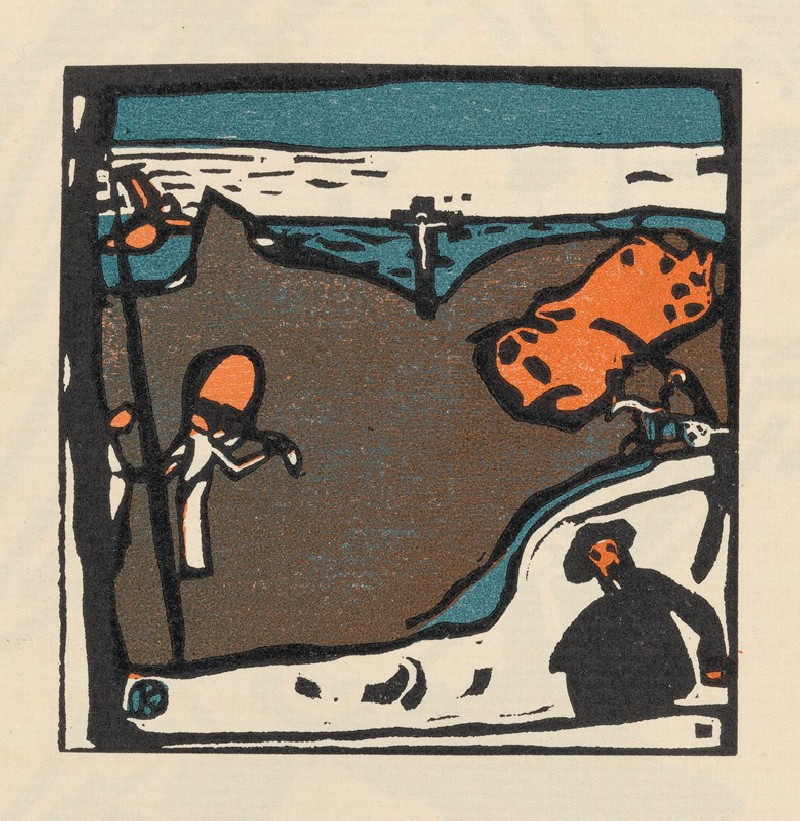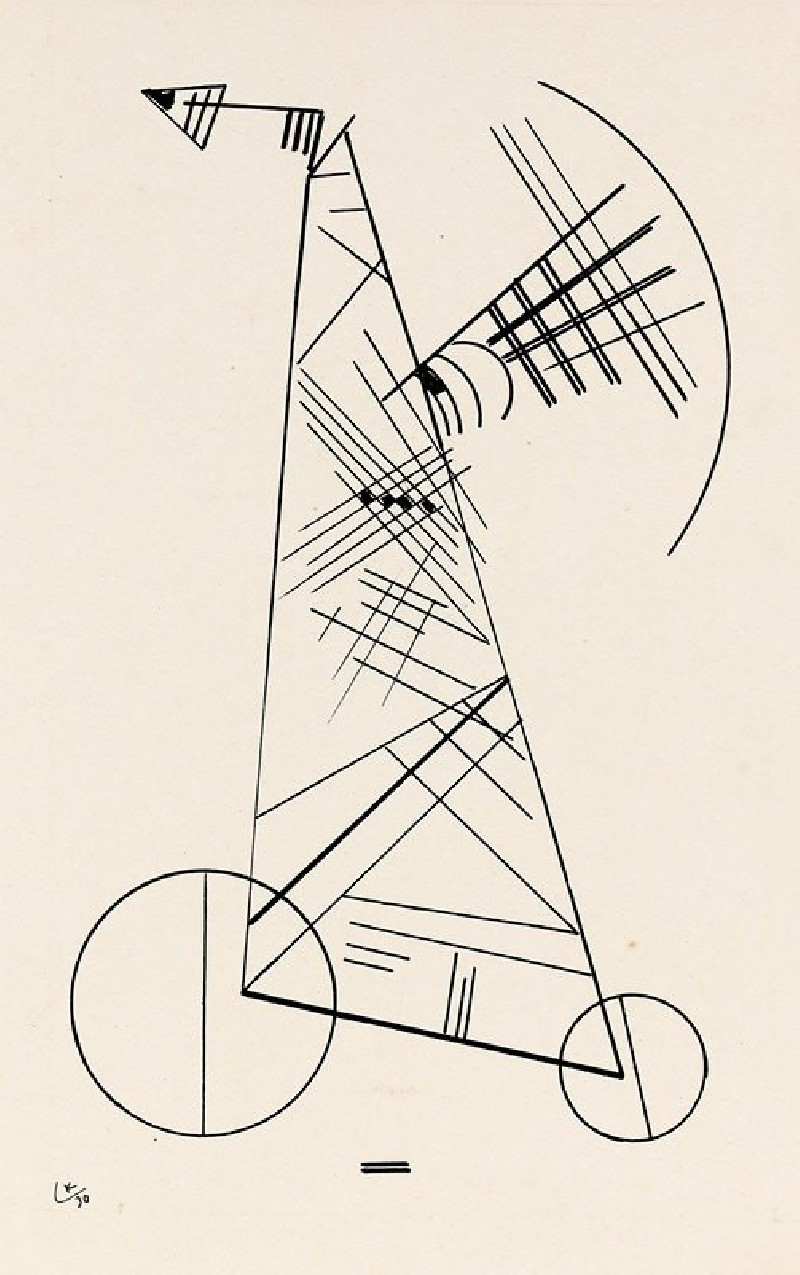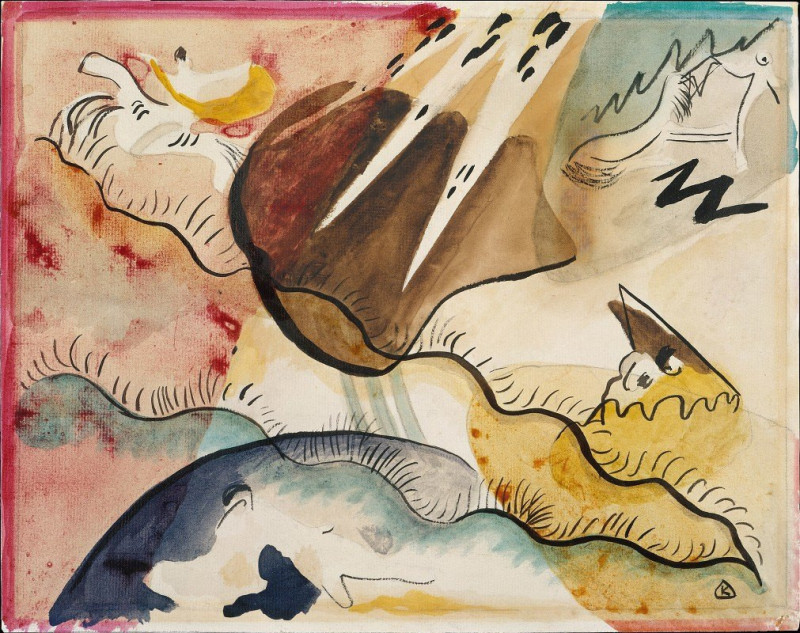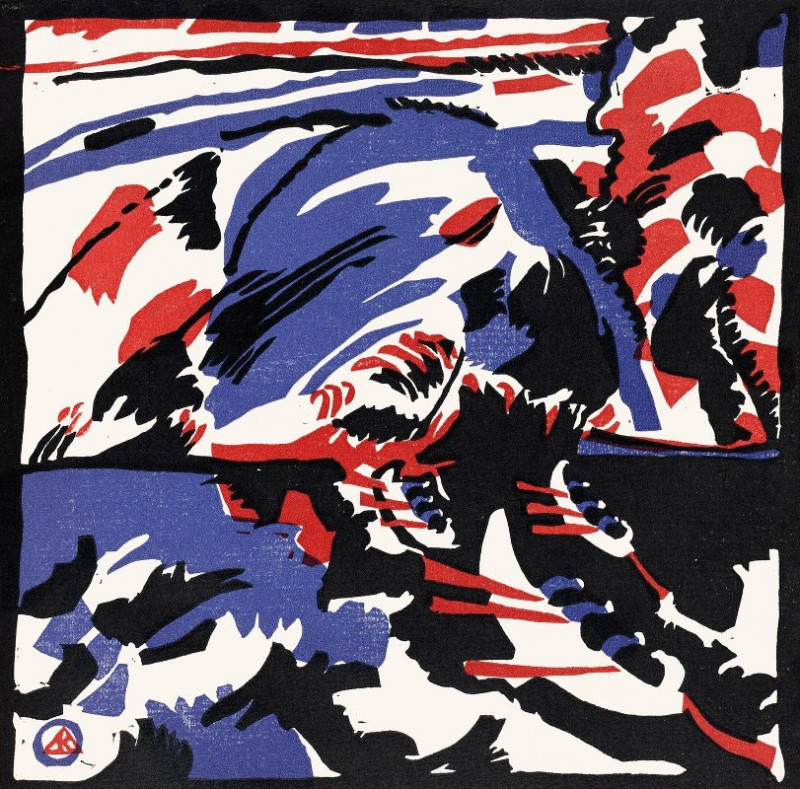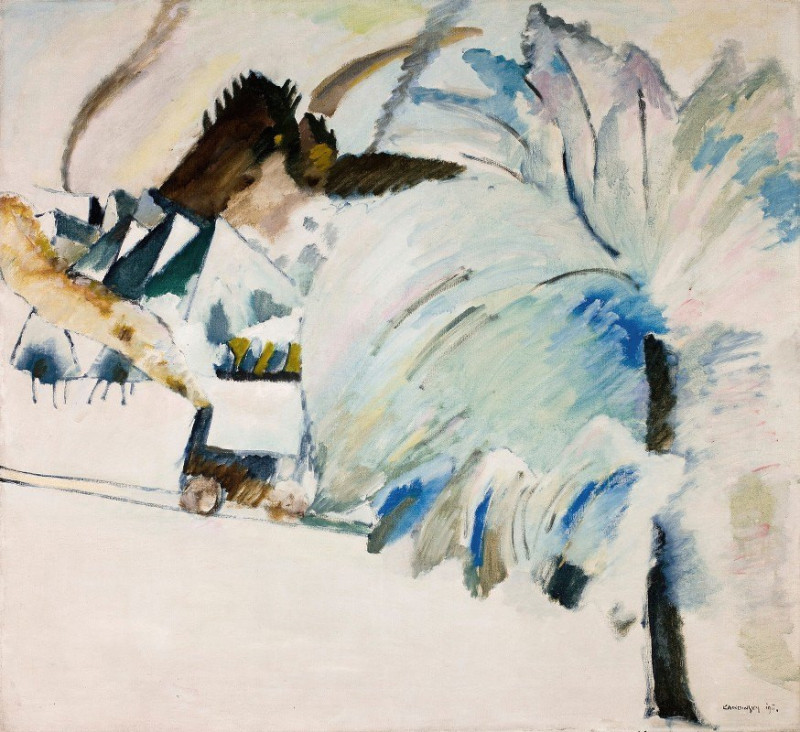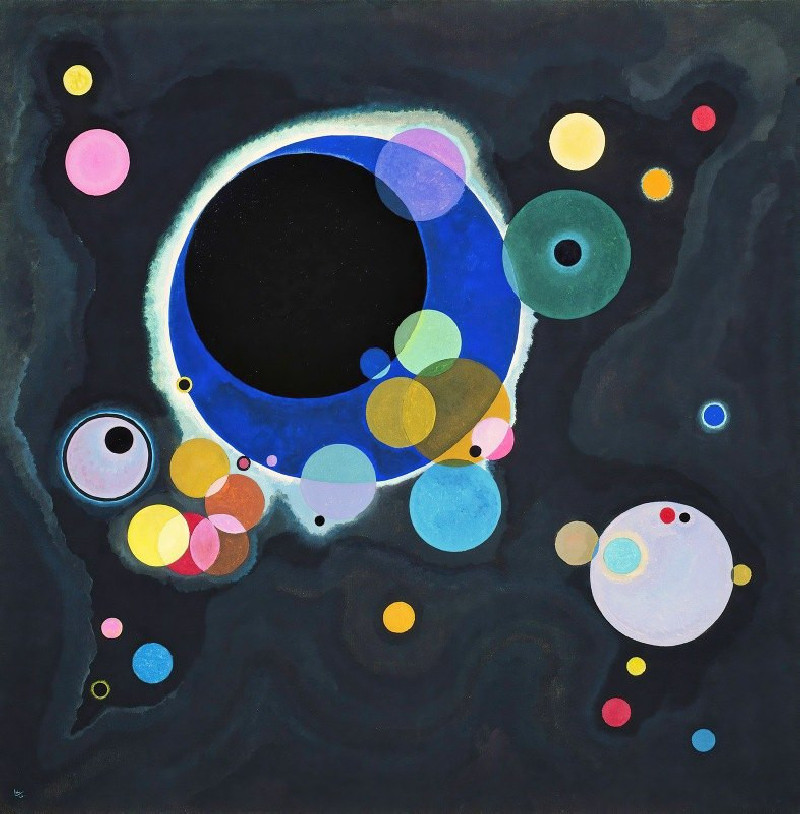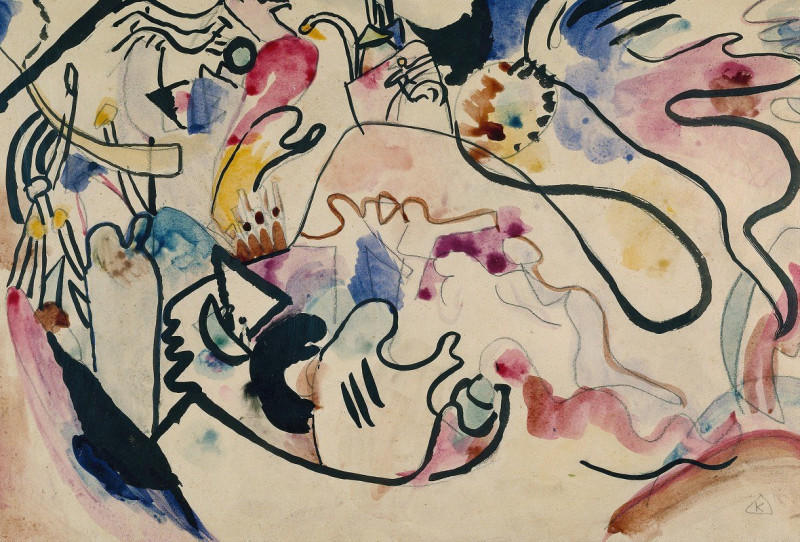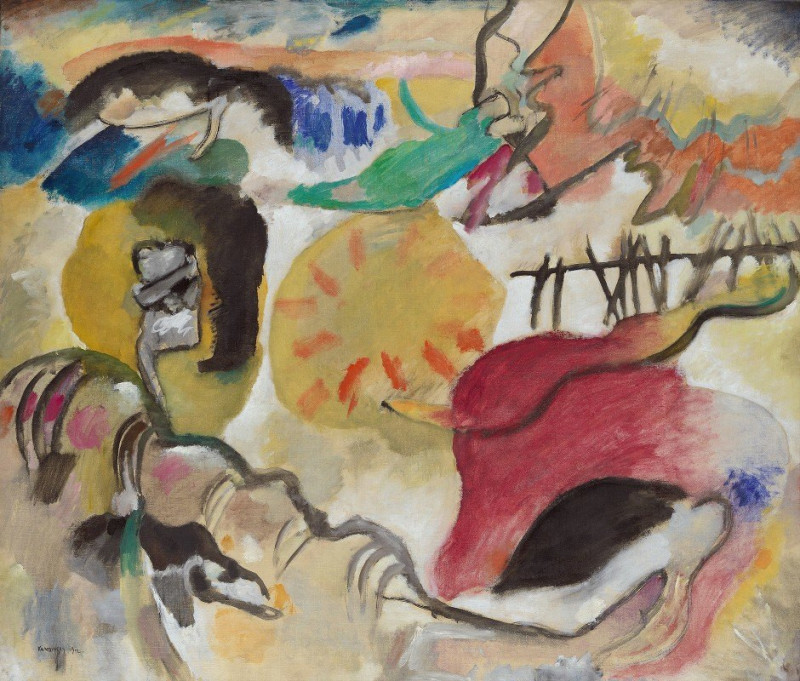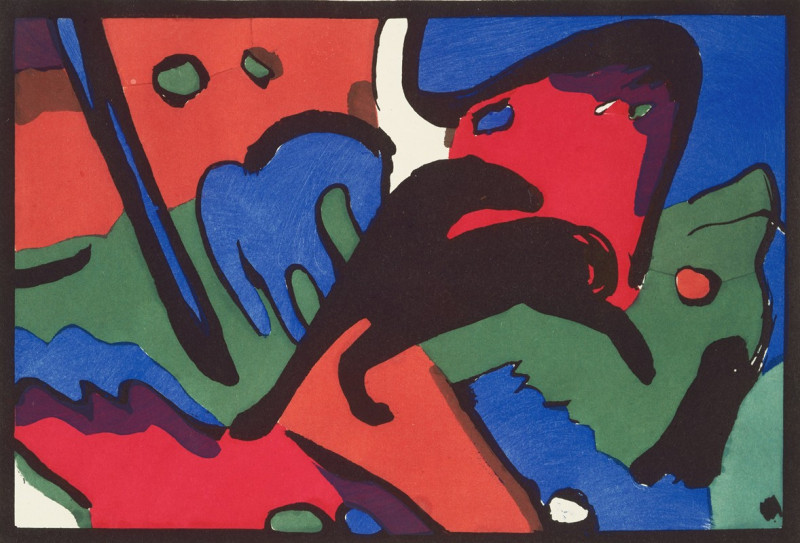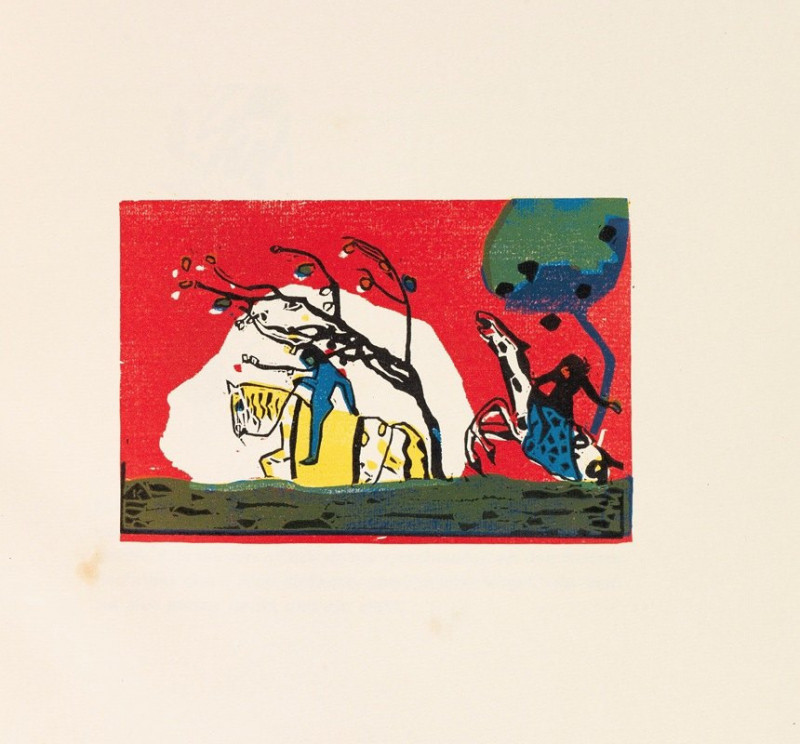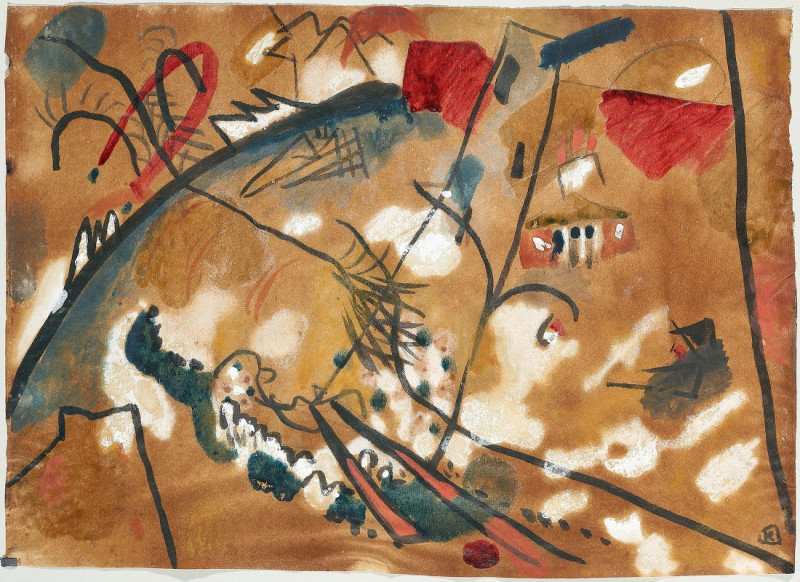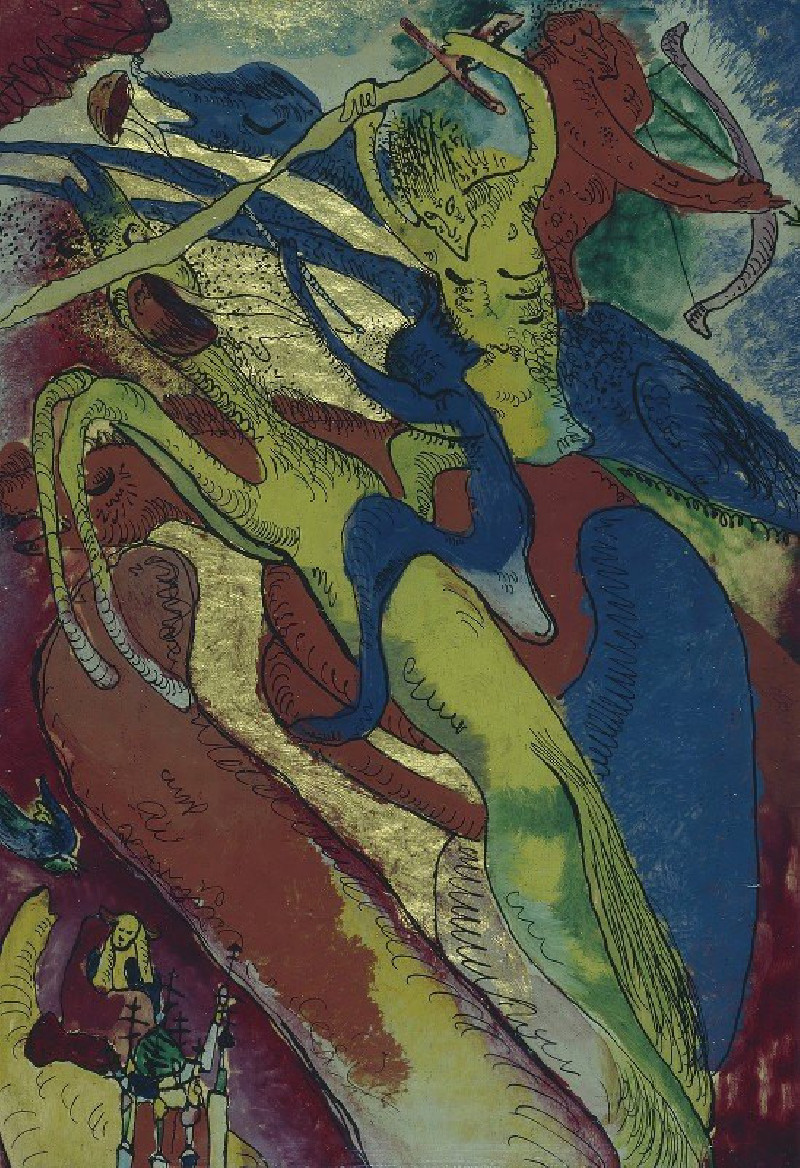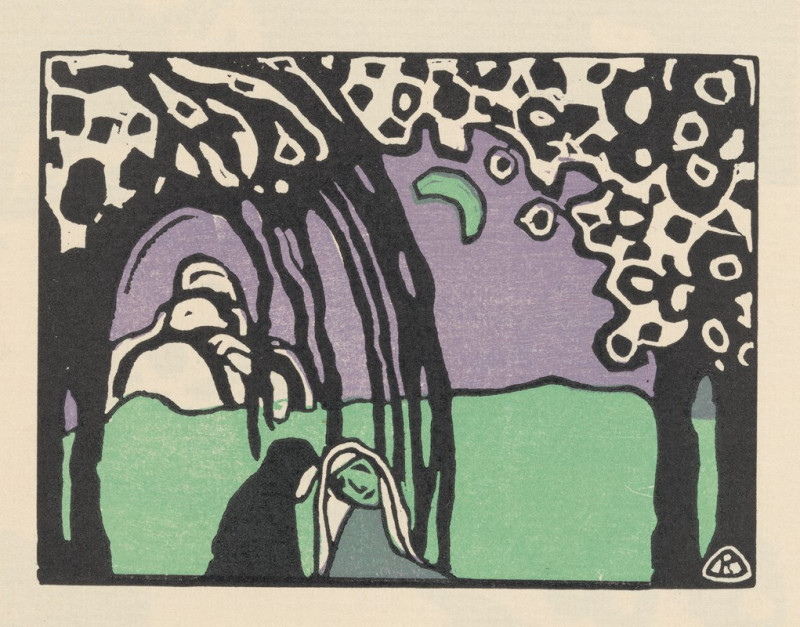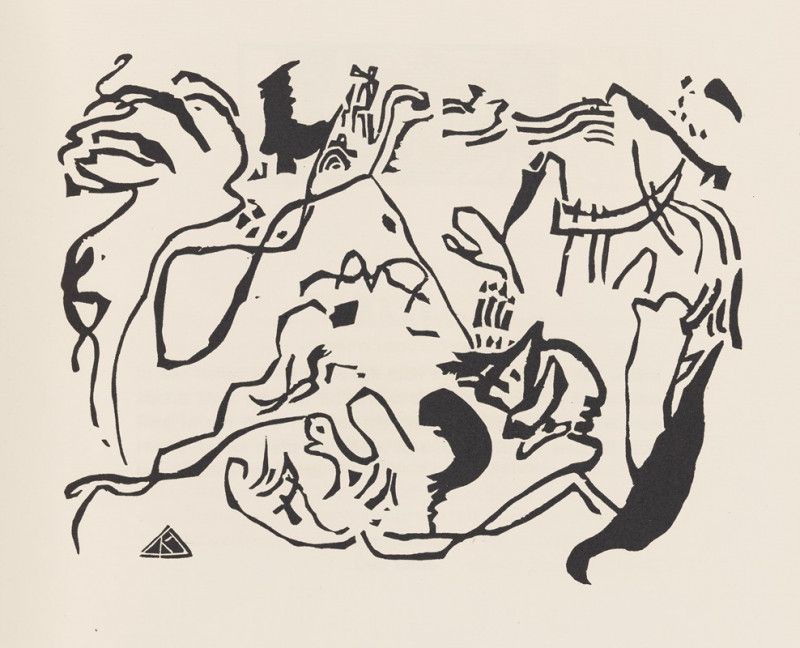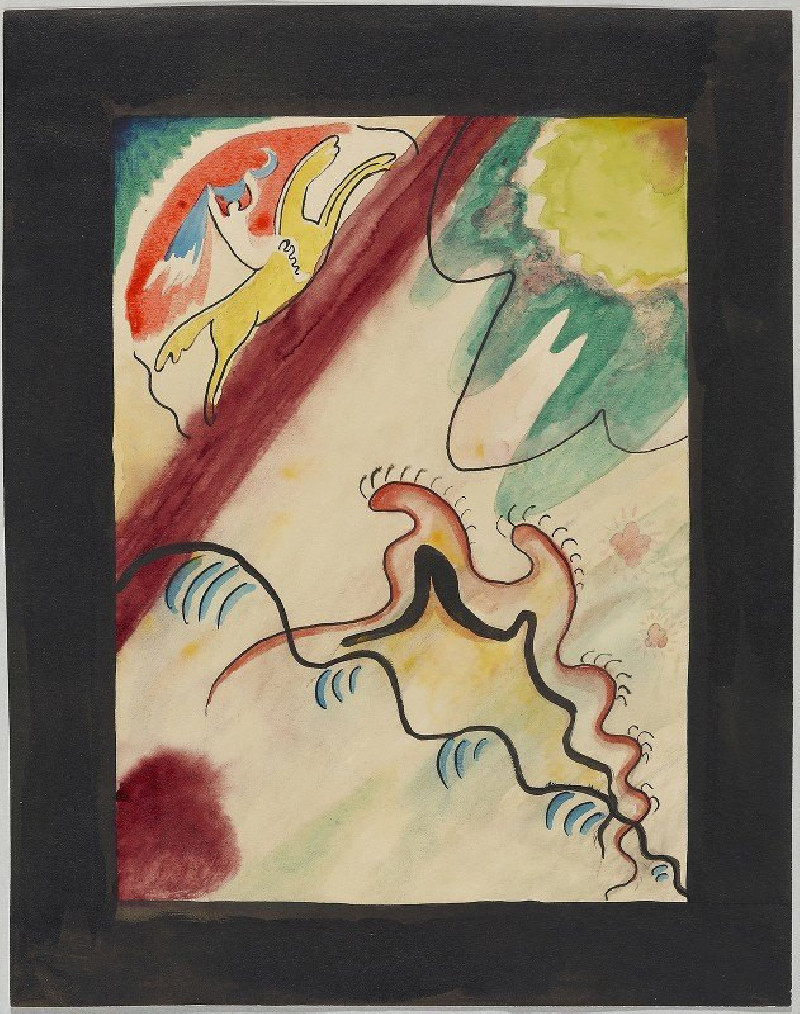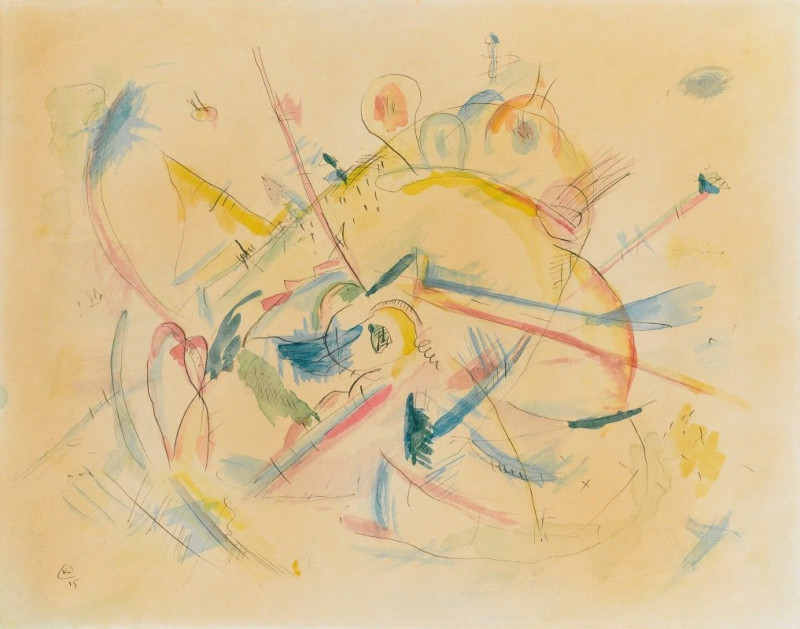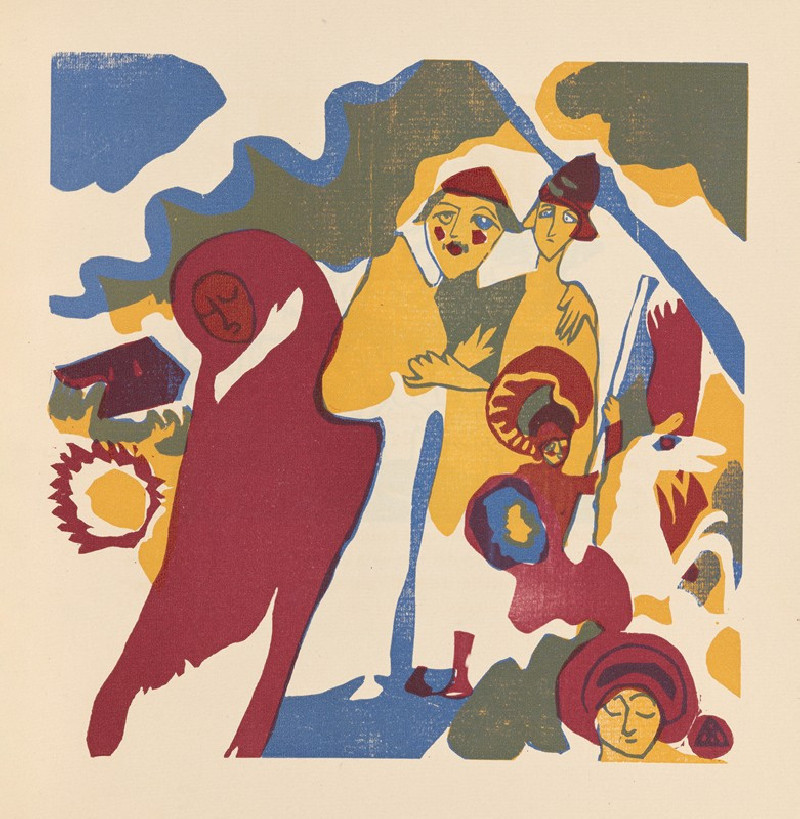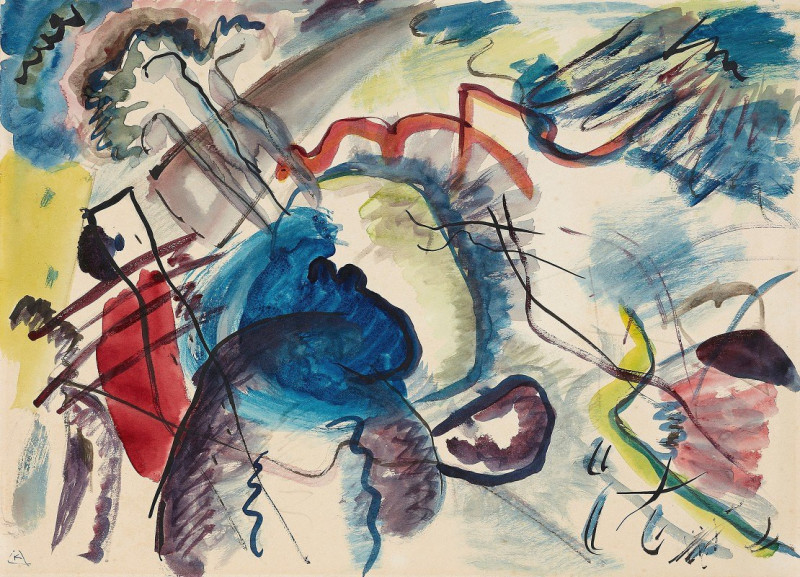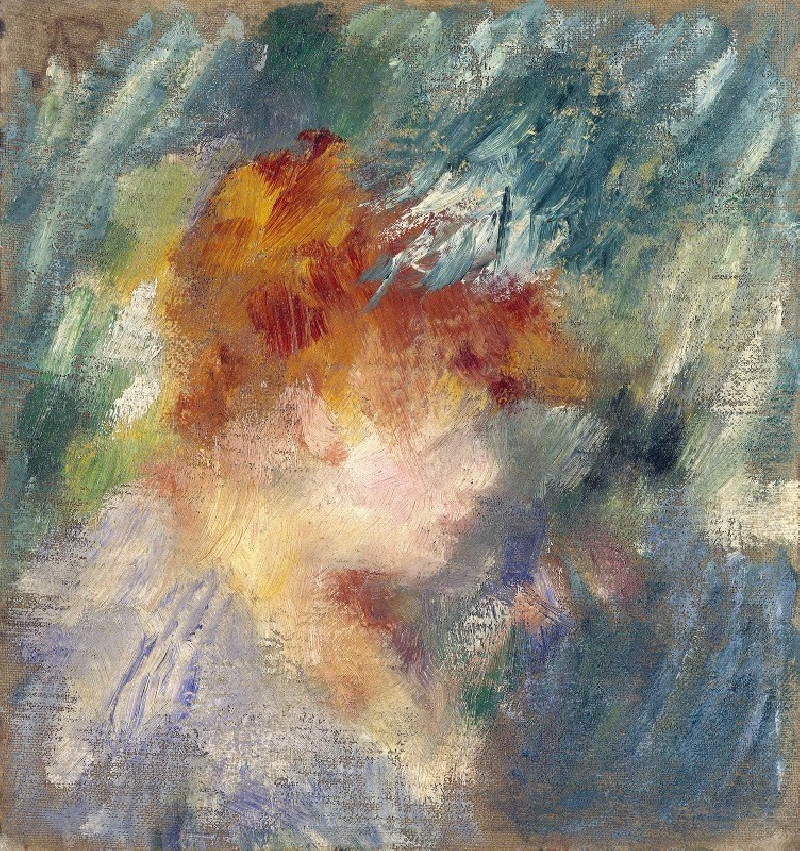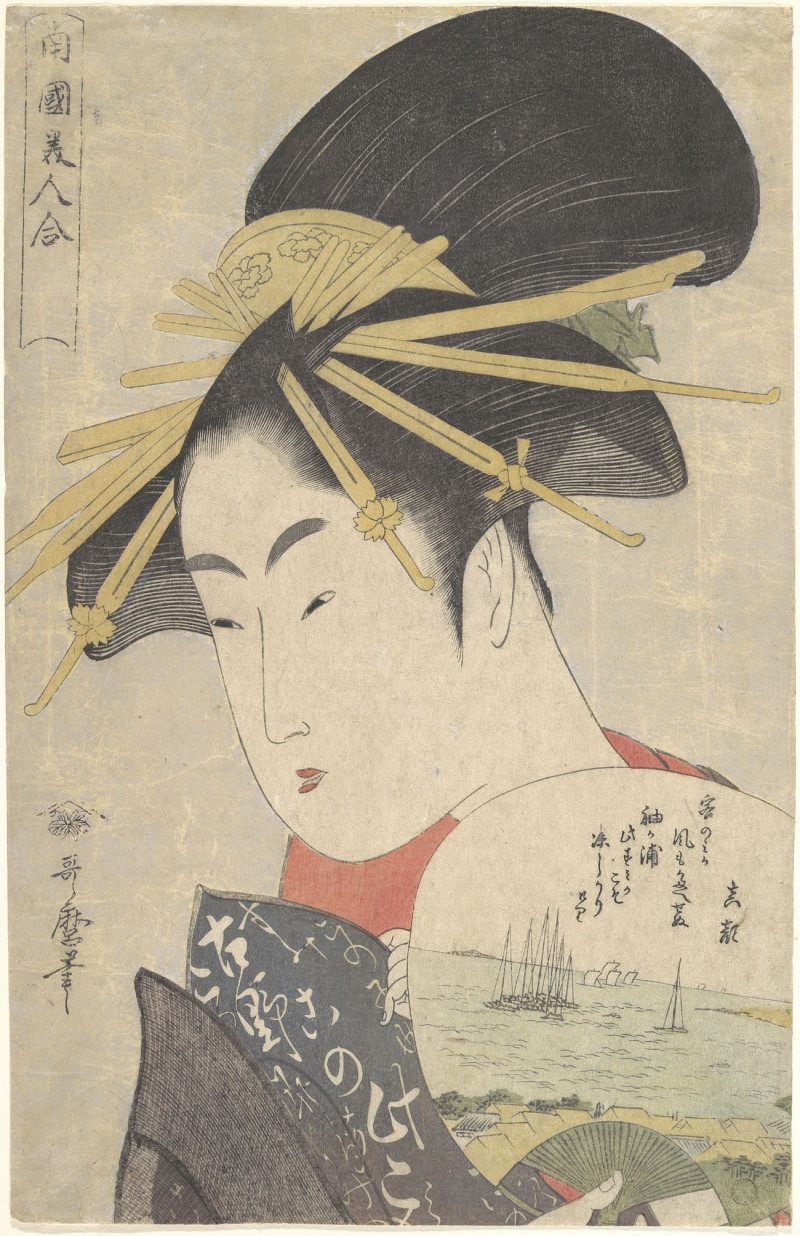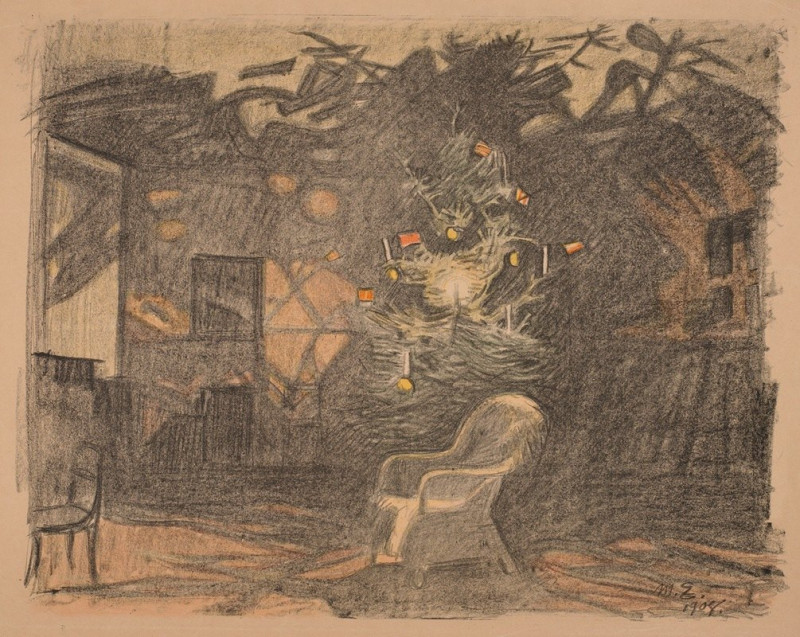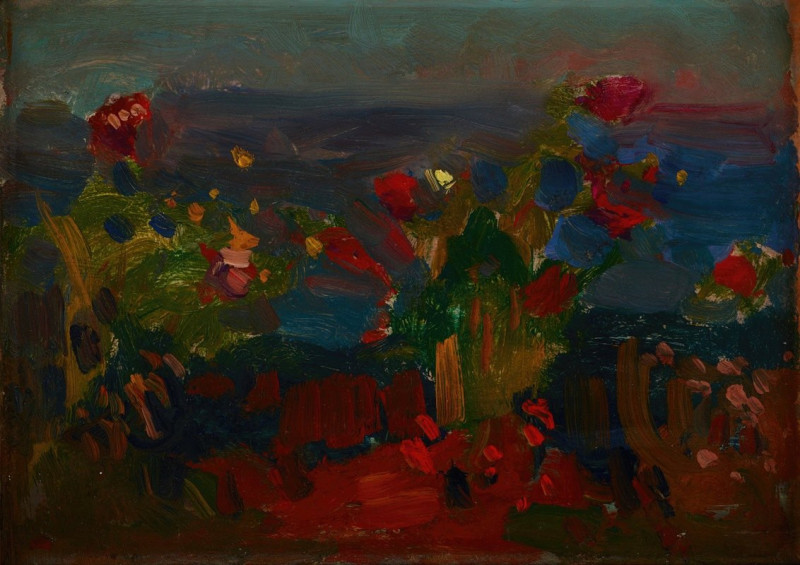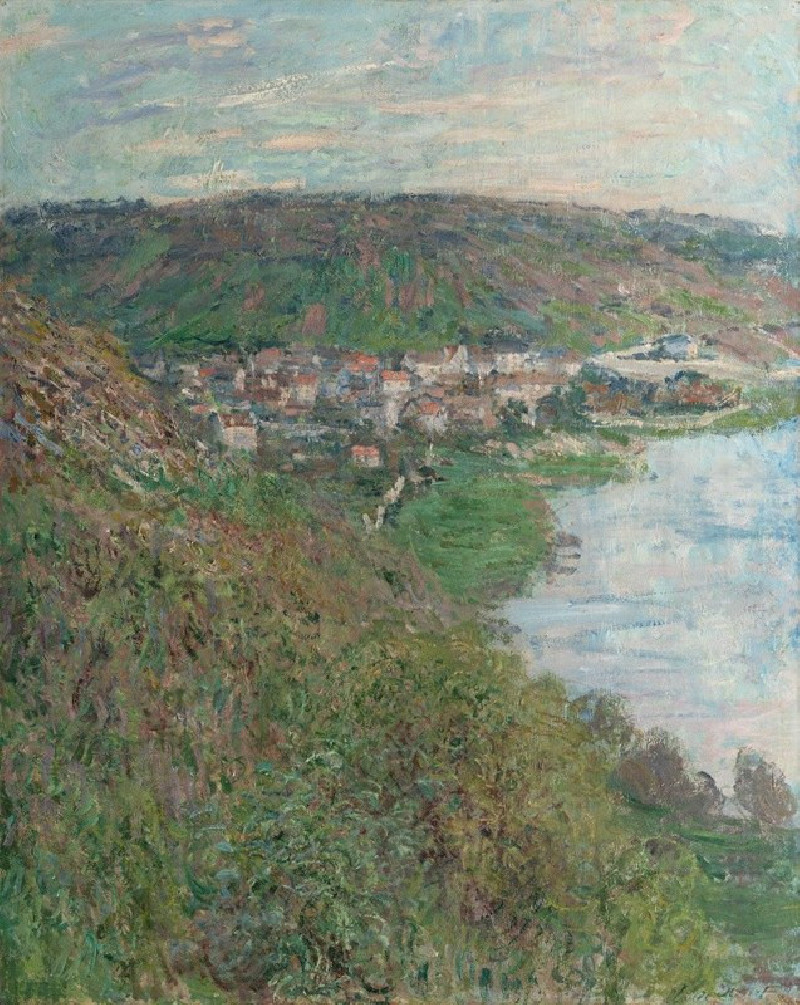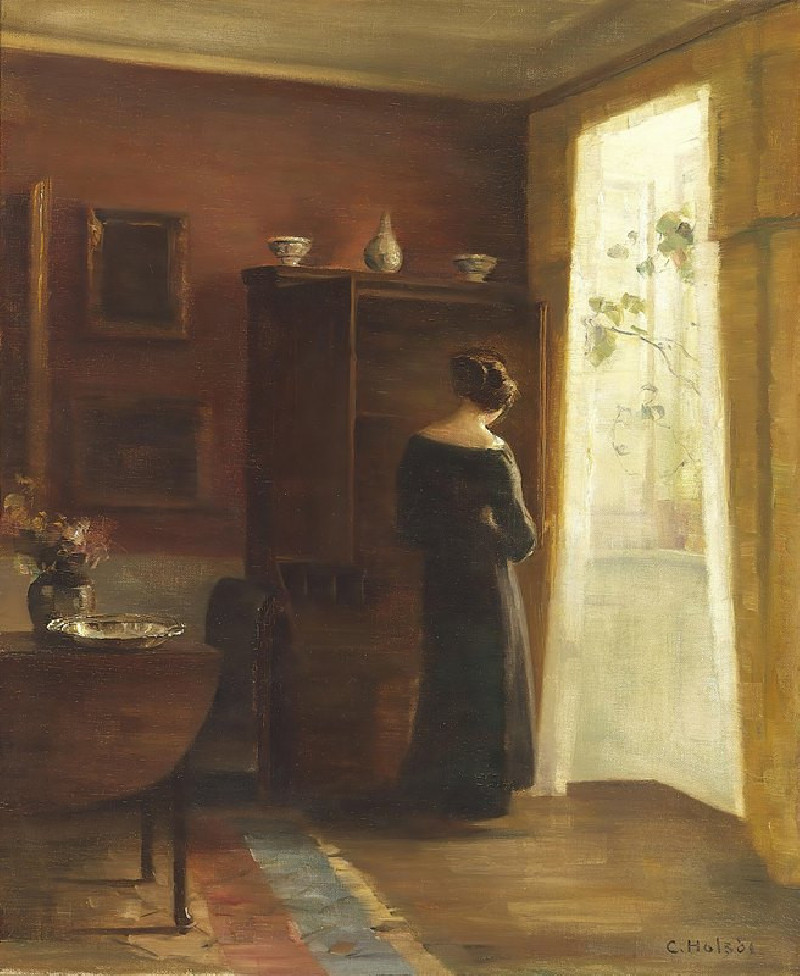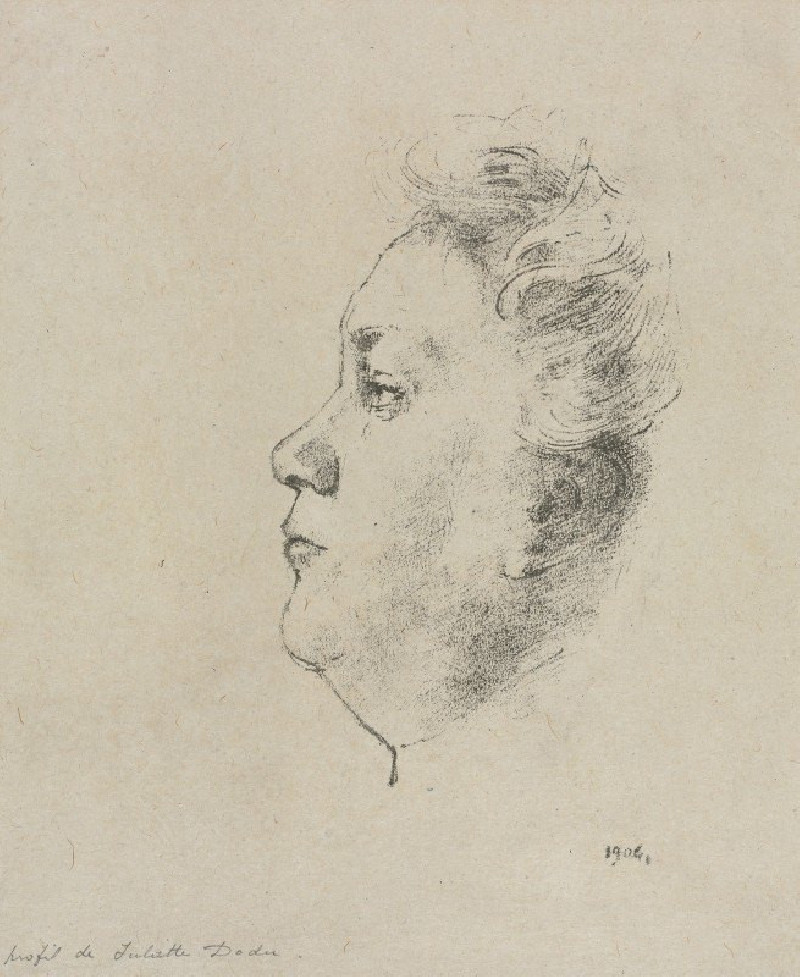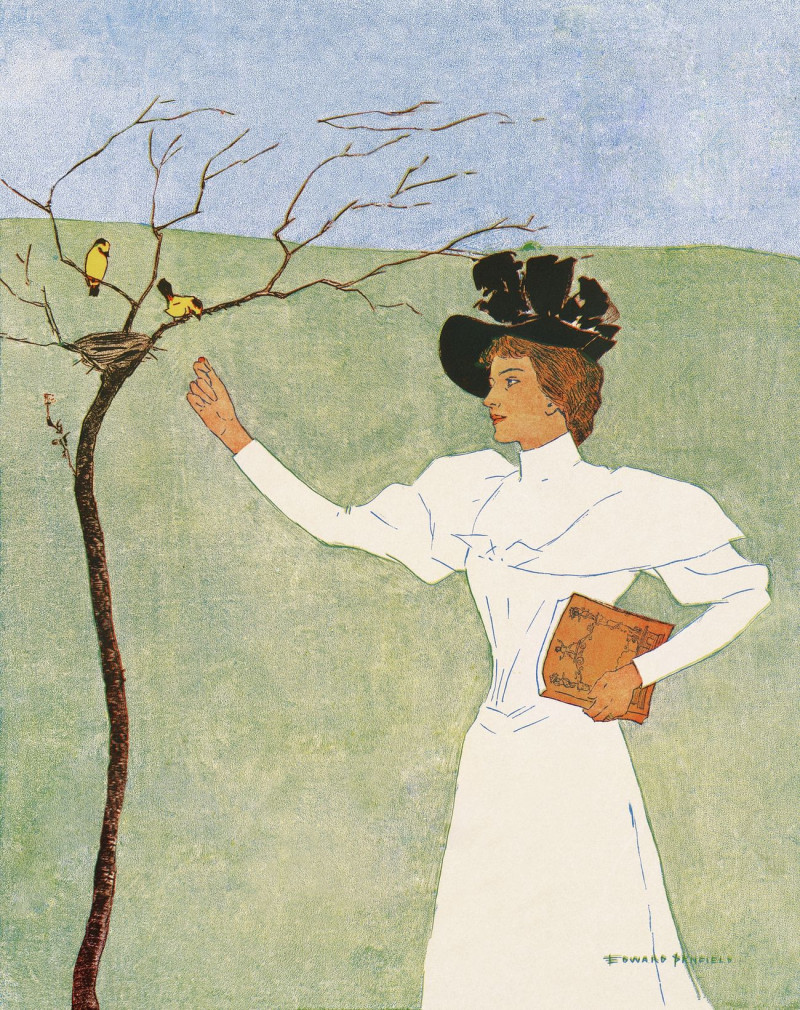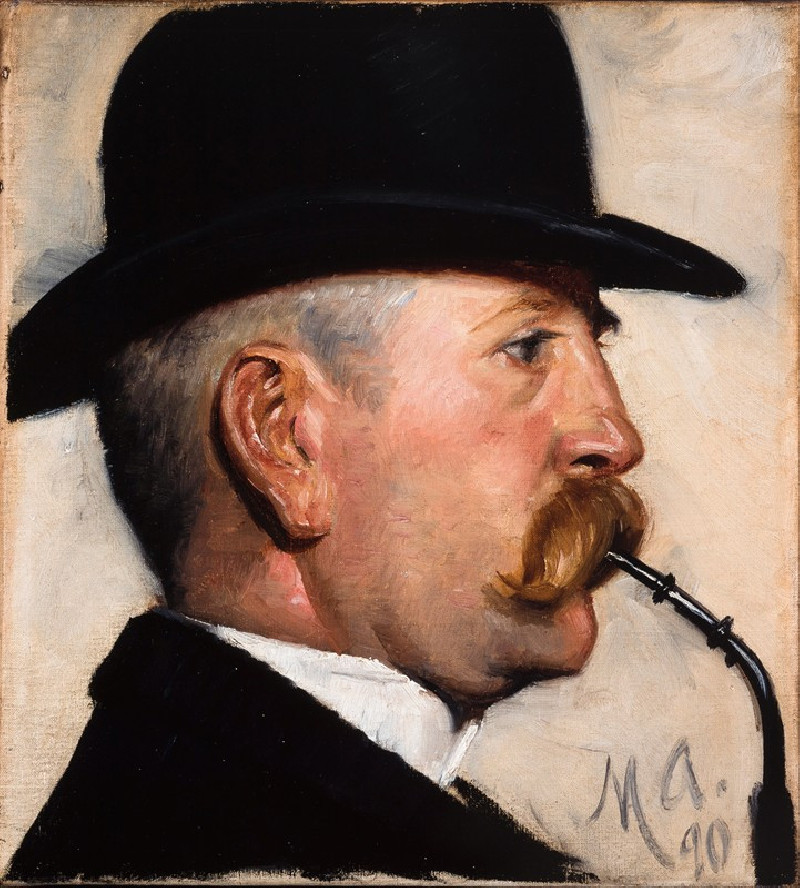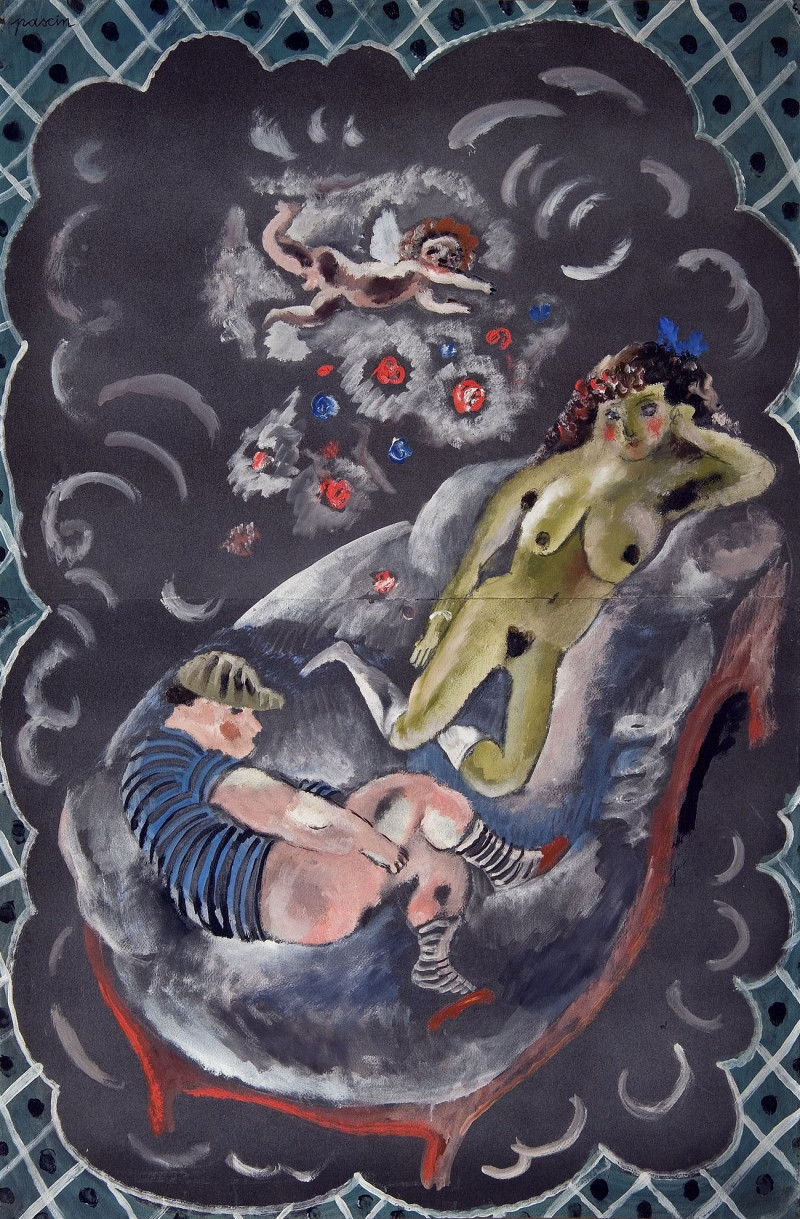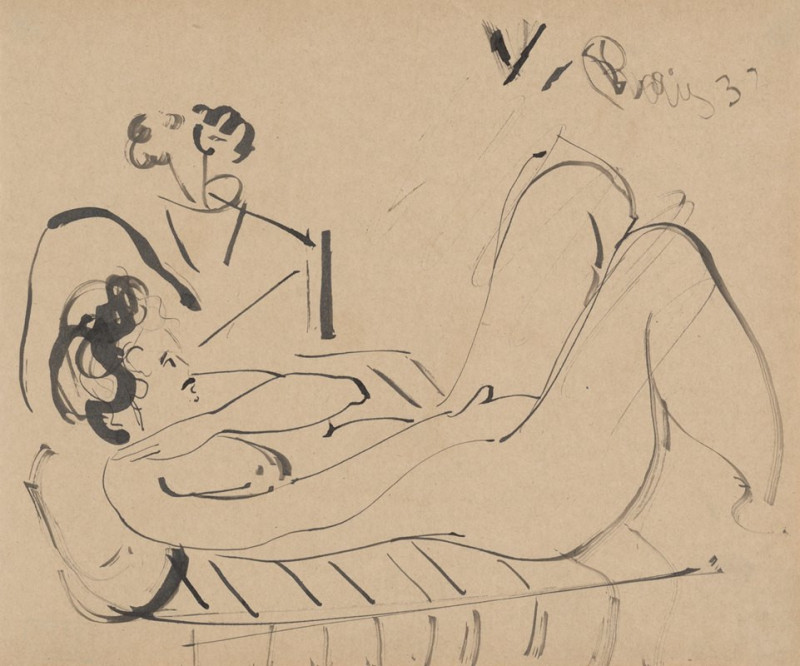Klänge Pl.16 (1913)
Technique: Giclée quality print
Recommended by our customers
More about this artwork
This piece by Wassily Kandinsky, known as "Klänge Pl.16" from 1913, is a colorful example of his groundbreaking abstract style. The painting features a vibrant, dynamic composition with energetic and somewhat mystical elements, typifying Kandinsky's interest in the link between painting and music, and his exploration of the psychological effects of color and shape.The image consists of bold, flat areas of color confined within a thick black border that both frames and segments the scene. The dark brown field dominates the central space, overlaid by abstract forms and figures in black, white, blue, and a striking orange-red. These forms and figures are simplified and stylized, evoking a sense of movement and interaction.The landscape elements appear almost theatrical, with a sense of foreground and background created by the layering of colors and shapes. The blue streak at the top suggests a distant horizon or perhaps a body of water, while the contrasting warm and cool colors enhance the composition's emotional depth.In "Klänge Pl.16," as in many of his works from this period, Kandinsky seems to invite the viewer into a non-representational world where color and form merge to evoke feelings and thoughts, rather than depict the physical world directly. This abstract visual language aims to communicate deeper truths through what Kandinsky believed was a universal aesthetic experience, akin to hearing a symphony.
Delivery
Returns
Wassily Wassilyevich Kandinsky was a Russian painter and art theorist. Kandinsky is generally credited as the pioneer of abstract art. Born in Moscow, Kandinsky spent his childhood in Odessa, where he graduated at Grekov Odessa Art school. He enrolled at the University of Moscow, studying law and economics. Successful in his profession—he was offered a professorship (chair of Roman Law) at the University of Dorpat today Tartu, Estonia)—Kandinsky began painting studies (life-drawing, sketching and anatomy) at the age of 30.

